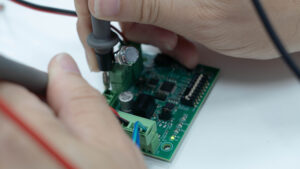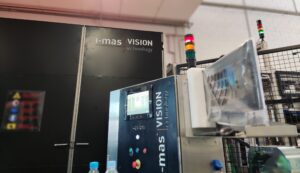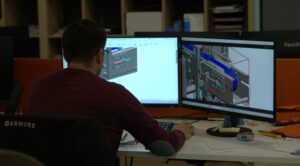The conceptual design process has always been the most creative and also the most uncertain stage in product development . Traditionally, it required long hours of sketching, preliminary 3D models, and iterative validations before arriving at a clear direction. Today, artificial intelligence (AI) is transforming that initial phase, allowing thousands of design alternatives to be explored in a matter of minutes and optimizing decision-making from the very first concept.
Tools such as Autodesk Generative Design, Fusion 360, or the generative design systems integrated into SolidWorks and Siemens NX leverage AI algorithms to generate geometries that simultaneously meet functional, aesthetic, and manufacturability requirements.
The result is not a replacement for the designer, but rather an expansion of their creative capabilities: AI acts as a co-pilot that proposes, analyzes, and validates possibilities at a speed impossible for the human brain.
From intuition to data: intelligence-based design
One of the biggest changes that AI brings to the conceptual phase is the ability to make decisions based on real data, not just subjective perceptions. For example, through machine learning, systems can analyze previous designs, evaluate their thermal or structural performance, and propose new shapes that optimize materials and weight without compromising strength.
Instead of relying solely on talent or intuition, designers can train predictive models using databases from previous projects. This allows them to anticipate failures, adjust dimensions, or even predict user reactions to certain finishes or configurations.
The combination of virtual simulation and data analysis significantly reduces validation times in the early stages of industrial design.
Generative design: limitless exploration in product design
Generative design is probably the most disruptive application of AI in product design . Based on a few input parameters—such as loads, geometric constraints, or material type—the algorithm generates hundreds or thousands of structurally valid options. The designer goes from being a manual creator to a curator of solutions, selecting the one that best balances aesthetics, cost, and functionality.
This not only speeds up the process, but also opens up possibilities beyond imagination. Many of the forms that emerge from generative design are organic, lightweight, and structurally efficient, anticipating trends such as topological optimization and advanced additive manufacturing.
AI and collaboration: faster teams, smarter processes
Artificial intelligence is also improving multidisciplinary collaboration between designers, engineers, and manufacturing specialists. Cloud-based collaborative environments allow multiple profiles to work simultaneously on a model, with AI automatically adjusting parameters based on real-time changes. This means that feedback between departments is immediate and the number of iterations is drastically reduced.
In addition, generative AI systems can be integrated with product management software (PLM) or advanced simulation tools, creating a continuous design flow that connects the conceptual phase with engineering and production.
The immediate future of conceptual design
AI will not replace human creativity, but it is redefining the way design teams work. Instead of spending weeks generating variants or testing configurations, designers can focus on refining the user experience, aesthetics, and meaning of the product, while artificial intelligence takes care of optimization and exploring alternatives.
The future of conceptual design will therefore be a balance between intuition and algorithms, with AI acting as a catalyst for creativity. Companies that adopt these tools will not only gain speed and efficiency, but also a competitive advantage based on knowledge and adaptability.
In a world where development time is increasingly shorter, artificial intelligence has become an indispensable partner for those seeking to innovate, produce, and launch products with a smarter approach.
I-MAS and the integration of AI in product design
At I-MAS, we apply artificial intelligence and generative design as part of an integrated methodology that combines industrial design, engineering, and electronic development. Thanks to this collaboration, concepts evolve from the first sketch with perfectly aligned technical and aesthetic criteria. AI allows us to analyze data, optimize geometries, and drastically reduce iteration times, ensuring that each product is developed with precision and efficiency from the conceptual phase onwards.
Our team combines creativity, advanced simulation, and manufacturing expertise to deliver innovative, sustainable, and market-ready solutions.
Discover how we can help you take your project to the next level. Contact us and take the first step towards innovation.



